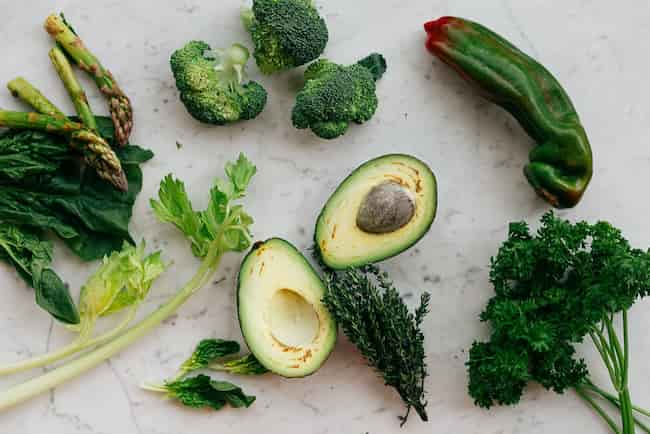The Flexitarian Diet?
The flexitarian diet has been given a lot of attention in the last few years, especially from celebrities who have made public their decision to eat meat only occasionally. This is excellent news for red-blooded carnivores like me. Now everyone can get on board and enjoy their occasional steak without guilt or shame.
And so they should because a flexitarian diet is a healthy choice that also helps the environment and animals. But what is a flexitarian? Unlike vegetarians and vegans, who avoid all animal products, including eggs and dairy, flexitarians reduce how much meat they consume while continuing to eat animal products other than meat.
Most people may already be flexitarians at heart but don’t realize it – because that means not eating meat every day. The trend has been getting stronger for years because more people are starting to realize that being flexitarian is good for them, good for the environment, and great news for hungry animals.
Flexitarian diet food list:
1. onions: This root vegetable contains chromium, an essential mineral that guards against insulin resistance and regulates blood sugar.
2. leeks: Leeks contain only 26 calories per cup (chopped), and they are also a good source of fiber and vitamin C. They can help in weight loss by suppressing appetite and promoting satiety.
3. lentils: Lentil is high in protein and fiber and low in fat; it has all nine amino acids making them a complete protein. It also helps break down belly fat, lower cholesterol and promote heart health!
4. black beans: They’re high in fiber and protein and low in fat, which can help prevent overeating and stabilize blood sugar levels. They also contain resistant starch that prevents the body from absorbing glucose as it helps to slow digestion.
5. kidney beans: Like other legumes, kidney beans are loaded with fiber and protein but relatively low fat. As such, they keep you feeling full for longer than many other foods on the planet!
7. oatmeal: Whole-grain oats provide a whopping 55% of your daily recommended intake of manganese — critical for carbohydrate metabolism — per one-half cup serving. Eating just one serving of oatmeal daily provides 15% of the recommended daily dietary fiber intake and can help you feel full and less tempted to eat more later.
8. broccoli: Healthy broccoli recipes are a great addition to any low-calorie, low-fat diet because it contains almost no calories but are high in fiber and protein! Broccoli is full of antioxidants, vitamins C, E, K, and B6 as magnesium. It also has potassium which helps lower blood pressure levels.
9. tomatoes: since they contain the carotenoid lycopene, which may decrease your risk of developing cancer or heart disease by protecting against free radical damage from oxidative stress-causing toxins like cigarette smoke and air pollution. Tomatoes also have a lot of vitamin C and beta-carotene that boosts immunity.
10. brown rice: contains an antioxidant known as “beta-thioglycoside,” which helps detoxify the blood, normalize blood sugar levels and lower cholesterol. Brown rice also has a low glycemic index of 54, making it an ideal food for diabetes or anyone who wants to lose weight without starving themselves! It is also high in fiber that helps reduce appetite and stabilize blood sugar levels.
1 1 .oat bran: One of the best foods for a healthy heart is oat bran because it reduces total cholesterol while simultaneously increasing HDL (good) cholesterol by 10%. Oatmeal is another good breakfast choice since it’s high in soluble fiber, which can help lower LDL (bad) cholesterol by up to 15%.
How to eat vegetables on the flexitarian diet:
1. Try to use nutritious spices like oregano, cumin, or curry powder on your veggies because they contain phytonutrients that improve their antioxidant capacity and reduce inflammatory responses.
2. Add a small amount of olive oil or canola oil to steamed or boiled veggies because these oils contain high monounsaturated fatty acids that promote weight loss by boosting metabolism and decreasing appetite.
3. Lean proteins – eggs, lean meat, poultry without skin, fish – should be selected from the Meat & Poultry section of the Flexitarian Food List below. They make an excellent complement for many vegetable dishes!
4. Make sure not to overcook vegetables or lose valuable nutrients. To retain the maximum amount of nutrients, it’s best to steam vegetables for a short time. Nutrients are also lost when veggies are boiled, so try drinking the cooking water as a broth or mix with other ingredients in soups and stews.
The Flexitarian Diet food list:
Meat & Poultry :
• skinless chicken breast (grilled or roasted)
• lean ground turkey breast
• white fish such as tilapia, halibut, or cod (fresh, frozen or canned; avoid breaded varieties)
• shrimp
• sliced deli ham and Canadian bacon (choose those that haven’t been preserved with nitrates)
• extra-lean ground beef or lean steak (trimmed of excess fat)
Vegetables & Fruits :
• tomatoes
• mushrooms
• onions
• cauliflower
• red, green, and yellow bell pepper
• salad greens such as spinach, romaine lettuce, arugula, watercress, or Bibb lettuce
• broccoli florets
• sugar snap peas
• strawberries
Dairy Products :
• low-fat yogurt with live cultures (avoid yogurts with added sugars)
• skim milk cheese
• part-skim mozzarella cheese. Beans & Legumes :
•ils
• chickpeas
• red kidney beans
• navy bean
split peas Other :
•unsalted rice cakes or crackers (for snacking)
• almond butter or cashew butter (to spread on rice cakes or fruit)
• low-sodium vegetable broth
